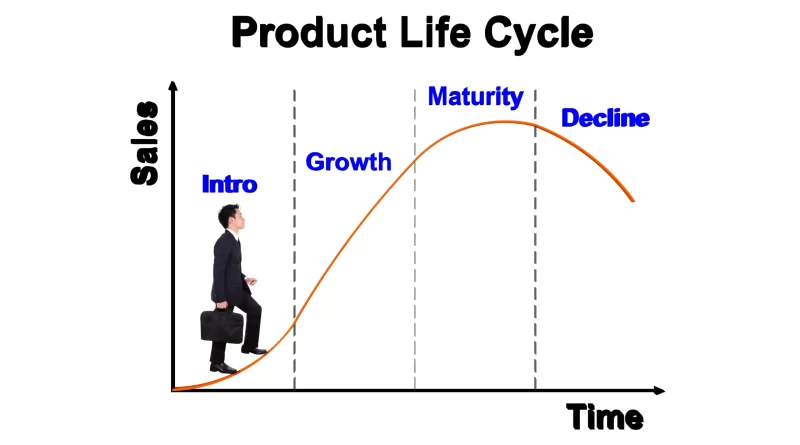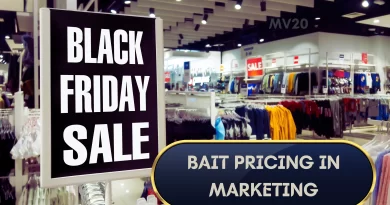4 Stages Of Product Life Cycle [Explained With iPod Example!]
Welcome to the wonderful world of product development! As a business owner understanding the product life cycle is essential for creating successful products that sell.
In this article, I will walk you through the four stages of the product life cycle, and explore what each stage means for your product.
The Four Stages of the Product Life Cycle
There are four stages that make up the product life cycle: the introduction stage, the growth stage, the maturity stage, and the decline stage. Let’s take a closer look at each stage:
Introduction Stage
This is the stage where your product is first introduced to the market. It’s a time of excitement and anticipation as you watch your product take its first steps into the world.
During this stage, you’ll be focusing on building awareness and generating interest in your product. This can be a challenging stage, as you’ll be working to establish your product in a crowded marketplace.
Growth Stage
As your product starts to gain traction, it enters the growth stage. During this stage, you’ll be focusing on increasing sales and market share.
This is a time of rapid expansion as your product gains popularity and becomes more widely accepted by consumers. It’s a time to celebrate as your product starts to take off.
Maturity Stage
As your product reaches maturity, it’s achieved its peak in terms of sales and market share. This is the stage where you’ll be focusing on maintaining your product’s position in the market, and looking for ways to extend its life.
This can be a challenging stage, as you’ll need to work hard to keep your product relevant in an ever-changing marketplace.
Decline Stage
The decline stage marks the end of your product’s journey. Sales and market share will start to fall, and you’ll need to make a decision about whether to continue to support the product or to phase it out.
This can be a difficult stage, as you’ll need to say goodbye to a product that has been a part of your life for a long time.
Tips for Managing the Product Life Cycle
Keep An Eye On The Market
Stay up to date with what’s happening in your industry, and be prepared to pivot if necessary.
Be Ready To Adapt
As your product moves through the different stages of the life cycle, you’ll need to adapt your marketing and sales strategies to meet the changing needs of your product.
Keep Your Customers Engaged
It’s important to keep your customers engaged throughout the life cycle of your product. This can be done through regular communication, surveys, and focus groups.
Seek Out Ways To Increase The Product’s Life
Even as your product starts to decline, there may be ways to extend its life through new features, updates, or repositioning.
One way to visualize the product life cycle is through a table that illustrates the different stages and the corresponding characteristics of each stage.
Here’s an example of a table that summarizes the key characteristics of each stage of the product life cycle:
| Stage | Characteristics |
| Introduction | Low sales, high costs, high risk |
| Growth | Increasing sales, increasing market share, increasing profits |
| Maturity | Peak sales, saturated market, intense competition |
| Decline | Decreasing sales, decreasing market share, decreasing profits |
Another way to illustrate the product life cycle is by creating a SWOT analysis table.
| Strengths | Weaknesses | Opportunities | Threats |
| Introduction | Unique selling point, Branding, First-mover advantage | Lack of consumer awareness, Limited distribution | Educating consumer and building brand awareness, Building strategic partnerships |
| Growth | Increasing market share, Product popularity, positive cash flow | Limited resources, Overconfidence | Expanding into new markets, Increasing distribution channels |
| Maturity | Established brand, Strong customer base, Economies of scale | Lack of product innovation, Decreasing sales | Diversifying product line, Cost cutting |
| Decline | Strong brand equity, Loyal customer base | Decreasing sales, Increasing costs | Licensing, Divestitures |
This table presents the strengths, weaknesses, opportunities and threats of each stage of the product life cycle, allowing you to identify what you need to focus on and where to take action to maintain or extend the life of your product.
Explaining Stages of Product Life Cycle With Example!
Let’s take a look at an example of a product that’s gone through the product life cycle: the iPod.
Introduction
Apple introduced the iPod in 2001, and it was an instant hit. The sleek design and easy-to-use interface made it a must-have for music lovers.
Growth
As sales of the iPod grew, Apple introduced new models with more features and capacity. The iPod became a cultural phenomenon, and it seemed like everyone had one.
Maturity
As the market for MP3 players became more crowded, the iPod’s growth slowed. Apple introduced new features like video playback and the ability to purchase and download music directly to the device.
Decline
As smartphones started to include music playback capabilities, sales of the iPod started to decline. Apple phased out the original iPod in 2017, but they still offer newer versions such as the iPod Touch, which is geared more towards gaming and apps.
Final Thoughts on Product Life Cycle!
The product life cycle is an essential concept to understand for any product development. It helps to identify the stage of a product and allows for proper strategic planning and decision-making.
Understanding the product life cycle is key to creating products that sell and have a lasting impact on the market. I hope I have clearly explained the stages of the product life cycle along with a good example that I explained and if there is still any confusion let me know in the comments!
Read this: 5 Things to Consider Before Launching a New Product




